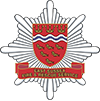Locations of our fire stations, the resources they have, and their staffing models are informed by a significant amount of data. This includes things like a community risk profile and historical incident demand information.
Staffing models
We have three models for staffing our stations which are based on the risk of incidents happening in the local area:
- Wholetime - Shift – where crews are available on immediate response 24/7.
- On call – where crews respond to an “alerter” telling them to get to the fire station.
- Wholetime - Day crewed – where crews are available on a mix of immediate response and “alerter” response.
Cover moves
Whenever an incident takes place, we consider whether we need to make what is called a “cover move” or a “standby move”.
Fire service cover moves are essential for ensuring timely emergency response and ensuring we maintain resources in the most appropriate place.
Essentially this means we move our fire engines into locations which best meet the community risk and support our response standards.
For example, the on call fire engine from Pevensey could be sent to “standby” at Bexhill if the Bexhill crews are dealing with a significant incident. Wholetime (full time) crews at Eastbourne would remain ready to respond to incidents in Pevensey.
Mutual assistance
Fire and rescue services support each other through mutual assistance, an arrangement that is written in the Fire & Rescue Services Act.
These arrangements ensure we will be ready to help the public across authority boundaries.
It is therefore not unusual for fire engines from different services to attend incidents outside what would seem to be their usual area.
In long running or complex incidents, support can be requested from any Fire and Rescue Service in the country.
